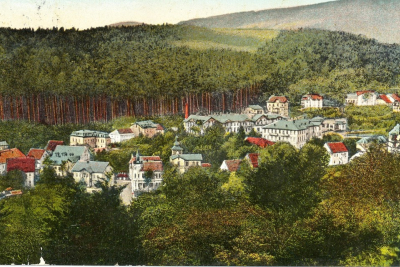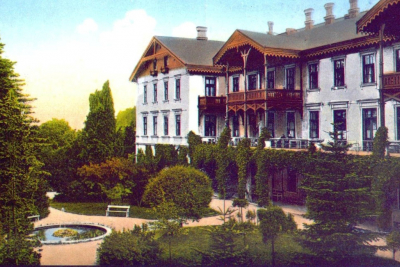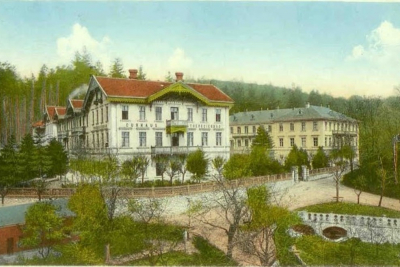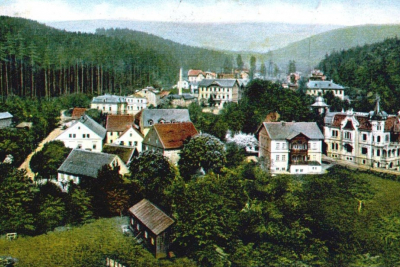The town of Dubi and spa development
The town of Dubí is situated on the southern slopes of the Ore Mountains, 420 metres above sea level. It is only 5 kilometres away from the larger town of Teplice. In 1966 Dubí was granted spa town status. The treatment was focused on patients who had suffered strokes, patients recovering from spine and brain surgery, polio and other conditions.
Spa treatment started to develop shortly after 1860 when the factory owner Anton Tschinkel, who was looking for a place to start keg production, found his summer home in Dubí instead and opened a siderolite and porcelain factory here. Later he met the renowned balneologist Josef Loschner who inspired him and together they established Diana´s climatic spa in 1862 and one of the physicians who worked here was Alois Brecher. Anton Tschinkel built many other important buildings, parks and a scenic restaurant in Dubí.
Another figure important for the spa development was the previously mentioned physician Alois Brecher. He built Dr Brecher´s Hydrotherapeutic Institute in 1871, which was modelled after therapeutic methods of Vincenz Priessnitz and Sebastian Kneipp.
An important personality in the history of Dubi spa treatment was the engineer who constructed the Moldava railway line, engineer Thomas Nowak, who bought plots around Spruce mill, where he built a new spa establishment and named it after his wife Tereza - hence Tereza´s spa. Prince Edmund Clary-Aldringen acquired all spas in Dubi in 1882, and expanded and improved them.
Among the most honoured spa guests were the writer Jan Neruda, opera singer C. Schenk, painter Vilem Riedel, composer Erwin Shulhoff, conductor Vaclav Talich and actor Oldrich Novy.
The Church of Immaculate Conception of Virgin Mary and other places of interest
The church was built to an order from the Clary-Aldringen family in the years 1898 – 1906 to reflect the original Venetian Santa Maria dell´Orto church. The design was developed by P. Bigaglio, an architect, and J. Siegmund of Teplice realized the building project.
A nearby railway track Dubi – Moldava (engineered by Tomas Nowak) was pronounced a national monument in 1998. Dubi is best known for its production of traditional Czech porcelain called “Cibulák” (blue onion pattern).



